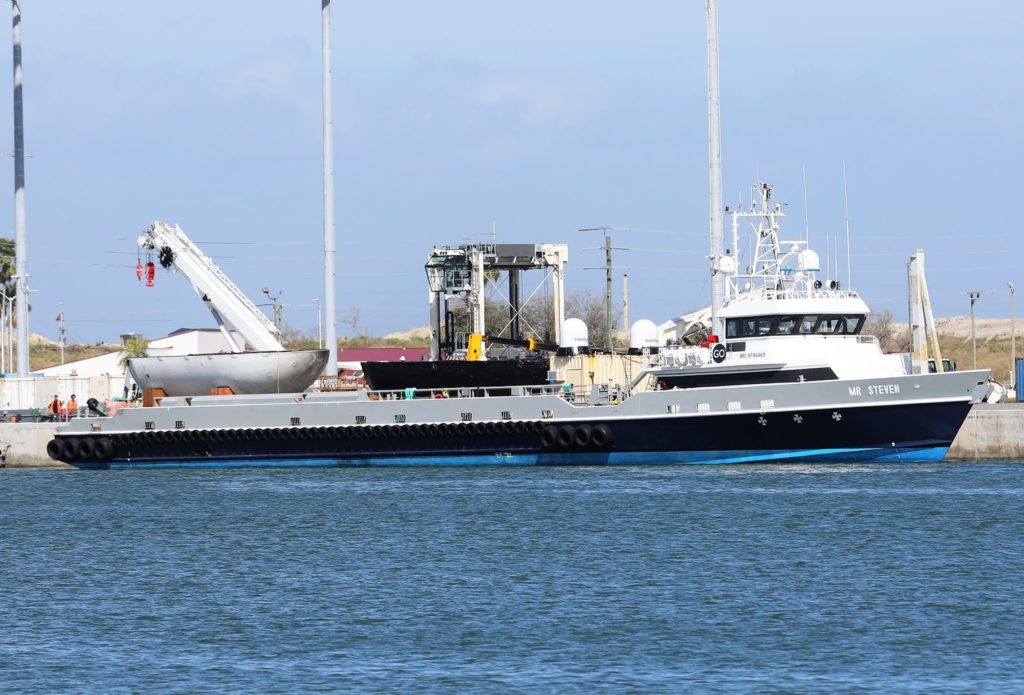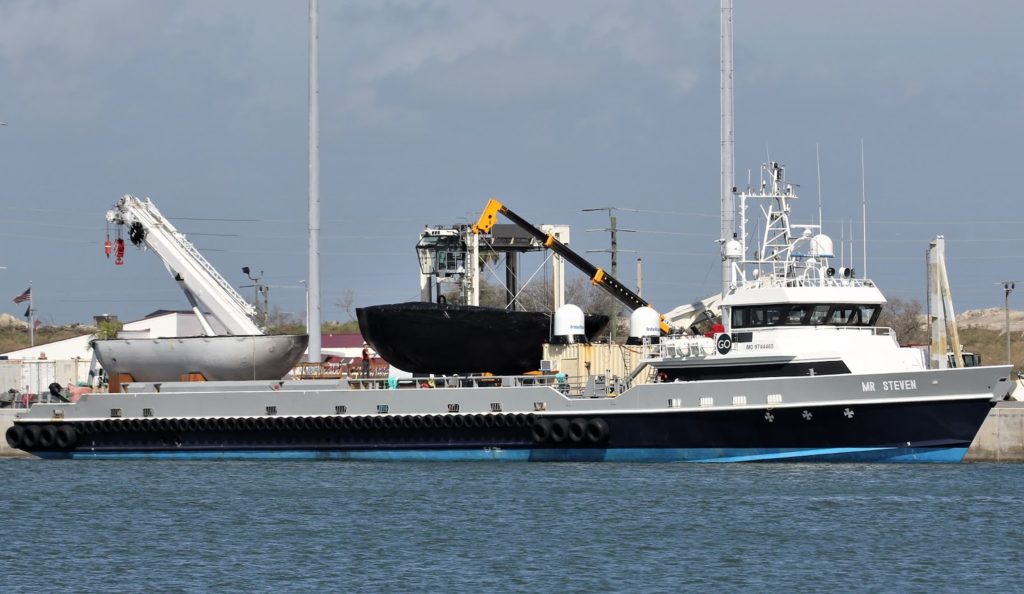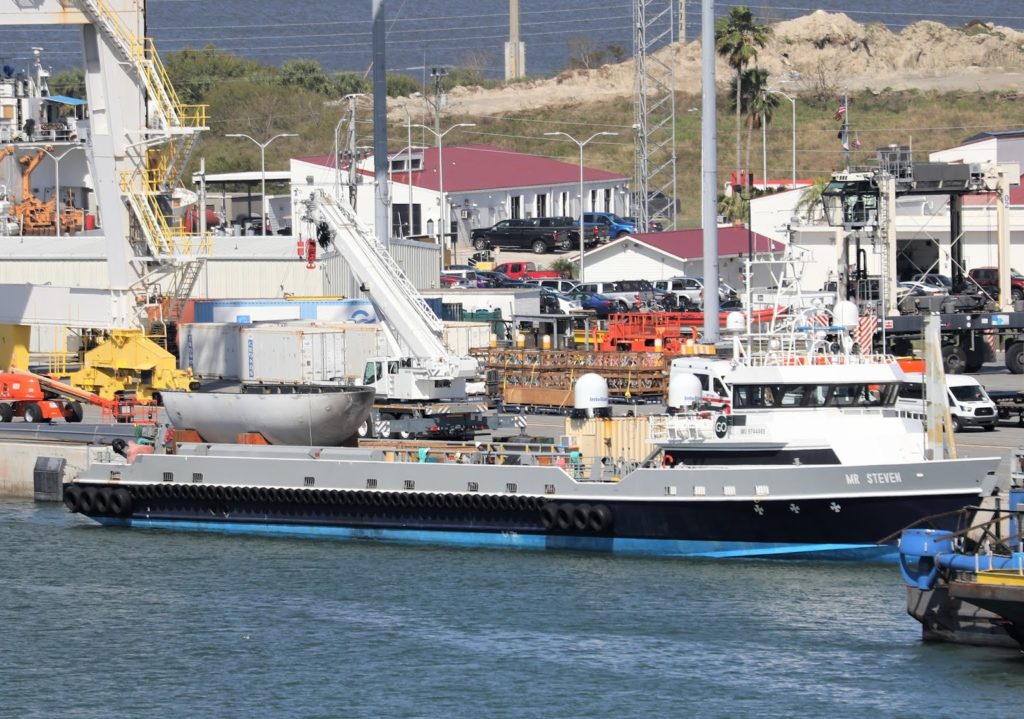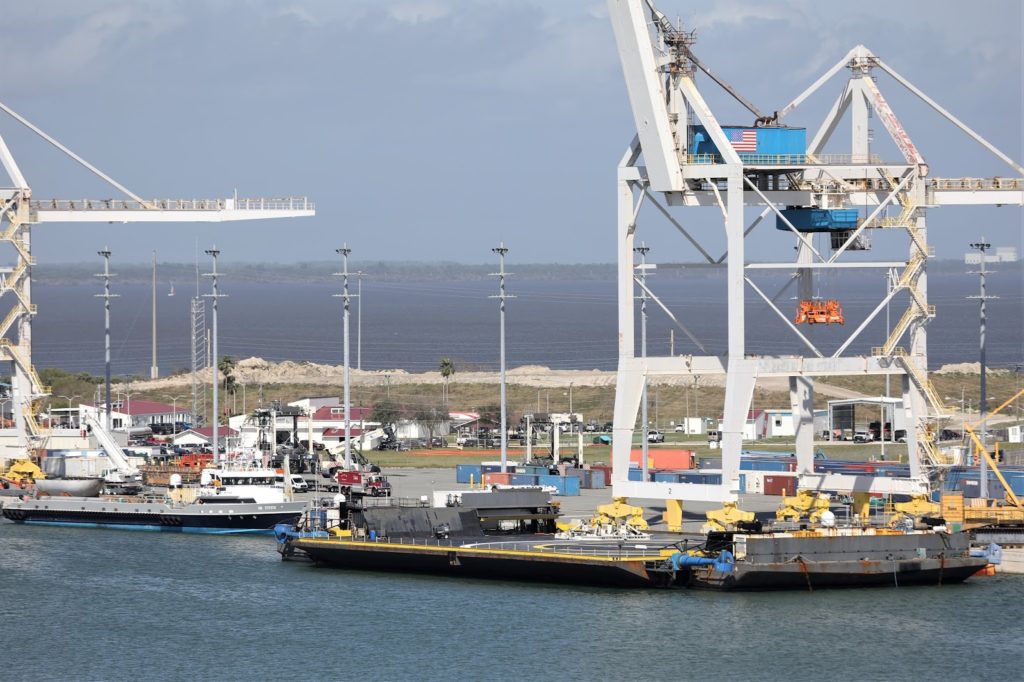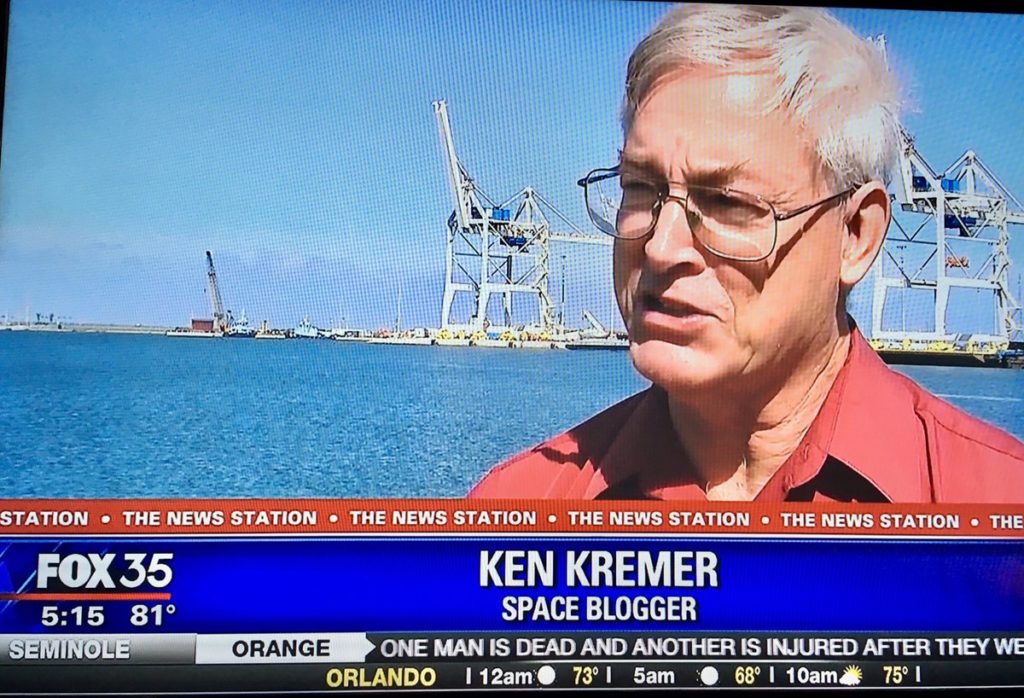Ken Kremer – – SpaceUpclose.com & RocketSTEM – – 11
February 2019
PORT CANAVERAL, FL – SpaceX’s unique ship whimsically named
‘Mr. Steven’ and designed to catch falling nose cones from rocket launches
sailed into Port Canaveral around 4 a.m. EST this morning, Monday Feb. 11 after
a two week voyage from the Port of Los Angeles.
When fully operational Mr. Steven will be outfitted with 4 massive arms and what
looks like a giant fishing net which functions as a huge ‘catchers mitt’ to catch
used payload fairing halves descending by parachute in mid-air after rocket launches –
but before they hit the ocean and suffer corrosion by salts and structural damage
by impact.
Mr Steven is a marine vessel that
will try and catch the fairings with the giant
net as they fall from the sky beneath a parachute before smashing into the sea waters.
SpaceX has tried this netting attempt scenario several times already on the West
Coast after Falcon 9 launches from Vandenberg AFB, California but not yet
succeeded. Although the ship has come
close a few times and almost succeeded on the last attempt in January.
Enjoy our gallery of Space UpClose images taken in Port Canaveral.
The twin payload fairings are bolted on top of SpaceX’s
Falcon family of rockets and protect the valuable cargo payloads housed inside from
destructive aerodynamic forces after launch as the rocket pierces the Earth’s
atmosphere. The fairing halves then separate and are jettisoned about 4 minutes
after launch and then normally descend in a free fall and crash into the ocean.
SpaceX hopes to change that past paradigm with Mr. Steven.
SpaceX CEO and billionaire founder Elon Musk says the
ultimate goal is to recover and recycle the nose cone fairings for another
launch and thereby help slash the high cost of access to space.
Watch the video in this SpaceX tweet showing a practice fairing recovery test on the West Coast:
Musk says the payload fairings cost about $6 million out of
an overall cost of about $60 million for a new Falcon 9 rocket. That’s contributing
roughly 10% and thus counts as a significant share of the overall cost.
more than 30 Falcon 9 first stages by land and by sea and successfully demonstrated
rocket recycling with them for new paying customers including NASA.
 |
| Credit: Ken Kremer/kenkremer.com/spaceupclose.com |
m long) Mr. Steven misses the ‘catch’ all may not be lost.
The parachute already enables a gentle soft landing of the nose cones in the sea
waters.
After snatching the fairing halves from the ocean, Musk
says if may be possible to rinse and reuse them.
“Falcon fairing halves missed the net, but
touched down softly in the water. Mr Steven is picking them up. Plan is to dry
them out & launch again. Nothing wrong with a little swim,” Musk
tweeted after a West Coast launch and fairing recovery on Dec. 3, 2018.
The approximately 5500 mile (8800 km) voyage from the West
Coast Port of Los Angeles to the East Coast Port took about 13 days and passed
through the Panama Canal.
Mr Steven was transporting two fairing halves on its deck
during the long voyage which were easily visible upon its arrival. They were
craned off by early Monday afternoon.
See our photos showing the craning operation.
With Mr. Steven now arrived in Port the next step
is to assemble the four massive arms and attach th.e ‘fairing fishing’ net.
If all that assembly work can be completed in time then
perhaps Mr. Steven will be dispatched on its first east Cost mission later this
month.
The next SpaceX Falcon 9 rocket launch is currently slated
for Feb. 21 carrying the Nusantara Satu communications satellite for Indonesia.
For more on this Fox 35 Orlando interviewed me today about Mr.
Steven’s arrival and fairing recovery goals.
Watch for Ken’s
continuing onsite coverage of NASA, SpaceX, ULA, Boeing, Lockheed Martin,
Northrop Grumman and more space and mission reports direct from the Kennedy
Space Center, Cape Canaveral Air Force Station, Florida and Wallops Flight Facility,
Virginia.
and human spaceflight news: www.kenkremer.com –www.spaceupclose.com –
twitter @ken_kremer – email: ken at kenkremer.com
KSC area, active in outreach and interviewed on TV and radio about space topics.
Ken’s photos are for sale and he is available for lectures and outreach events


